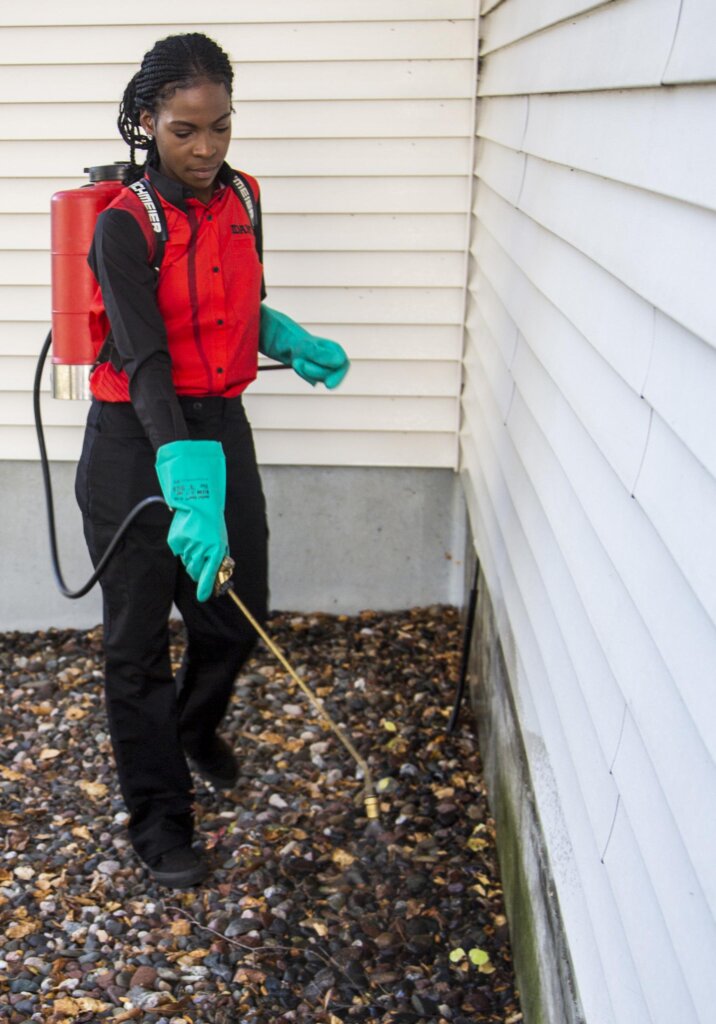A1 Bed Bug Exterminator Charlotte - Specialized Bed Bug Removal
A1 Bed Bug Exterminator Charlotte - Specialized Bed Bug Removal
Blog Article
Bed Pest Therapy Break Down: Comparing Chemical Vs. Non-Chemical Solutions
In the realm of parasite control, particularly when handling the consistent concern of bed bugs, the option between chemical and non-chemical treatment services can be an essential one. Both methods use distinct benefits and downsides, influencing elements such as efficiency, safety considerations, and overall cost. By checking out the nuanced details of each technique, a more clear understanding of which course to pursue in resolving a bed insect invasion can be acquired.
Performance of Chemical Treatments
Chemical treatments for bed insect problems have been commonly recognized for their rapid and potent efficacy in eliminating these insects. When taking into consideration the efficiency of chemical treatments, it is critical to recognize that they can offer a fast and thorough service to a bed pest trouble. Expert pest control experts commonly depend on insecticides to target bed bugs at numerous stages of their life cycle, including eggs, fairies, and grownups. These chemicals generally function by interrupting the bed pests' nerves, resulting in paralysis and eventual death.
In addition, chemical treatments have the advantage of using residual results, indicating that they can continue to eliminate bed insects also after the first application. This recurring activity is particularly useful in combating any potential re-infestations. Additionally, the rapid activity of chemical treatments can bring alleviation to individuals facing extreme bed insect invasions, allowing them to reclaim control of their space rapidly.
Safety Concerns With Chemical Solutions
One crucial facet that calls for careful factor to consider when using chemical solutions for bed insect therapy is making certain the safety of owners and the environment. Direct exposure to certain chemicals utilized in bed bug treatments can lead to breathing concerns, skin irritation, or other unfavorable responses, particularly in individuals with pre-existing conditions or level of sensitivities.
In addition, the ecological effect of chemical options is another considerable factor to consider. Some pesticides used in bed insect treatments may be dangerous to helpful pests, wild animals, and environments if they seep right into the dirt or water systems. It is necessary to utilize chemical therapies sensibly, following safety and security guidelines, and thinking about much less toxic options to minimize these risks and make sure the safe and efficient administration of bed pest infestations.
Benefits of Non-Chemical Strategies
Taking into consideration the potential safety problems and ecological effect associated with chemical solutions for bed pest therapy, discovering non-chemical approaches offers a promising choice with several unique advantages. Non-chemical therapies are ecologically friendly, as they do not add to air or water pollution, making them a lasting option for bug control.
Additionally, non-chemical solutions can be reliable in targeting bed insects, consisting of hard-to-reach locations where chemical treatments may not find more information penetrate - A1 exterminators charlotte nc. Approaches such as warm therapy, vacuuming, vapor cleaning, and bed mattress coverings supply complete obliteration without the use of damaging chemicals.
Limitations of Non-Chemical Treatments

In addition, non-chemical treatments usually call for several applications to accomplish effective obliteration. This can be lengthy and might not constantly guarantee total removal of all bed bugs and their eggs, especially in hard-to-reach or surprise places.
In addition, the success of non-chemical treatments greatly counts on proper application and thoroughness, which can be challenging for people without professional proficiency. Insufficient application of non-chemical methods may result in insufficient removal, bring about relentless infestations and the need for additional treatments.
As a result, while non-chemical therapies have their benefits, it is essential to recognize these restrictions and consider them when determining one of the most efficient strategy for managing bed bug infestations.
Cost Contrast: Chemical Vs. Non-Chemical Options
Provided the limitations linked with non-chemical therapies, an important facet to review in the context of bed pest monitoring is the expense comparison in between chemical and non-chemical options. In contrast, non-chemical therapies like warm treatment or vapor can be more costly, with prices ranging from $1,000 to $6,000 for an entire home. While the first expense of chemical therapies may appear reduced, several therapies may be called for to completely eliminate the problem, potentially increasing the total cost.
Conclusion

Considering the possible safety worries and environmental effect associated with chemical options for bed insect therapy, checking out non-chemical strategies presents an encouraging alternative with numerous unique advantages.Given the constraints associated with non-chemical therapies, a crucial element to evaluate in the context of bed pest monitoring is the expense comparison between chemical and non-chemical choices. In contrast, non-chemical treatments like warm treatment or heavy steam can be a lot more costly, with prices varying from $1,000 to $6,000 for an entire home. While the first cost of chemical treatments might appear lower, multiple treatments might be called for to totally remove the infestation, possibly increasing the overall cost.In conclusion, when comparing chemical and non-chemical bed bug treatment options, it is crucial to consider effectiveness, safety, benefits, limitations, and cost.
Report this page